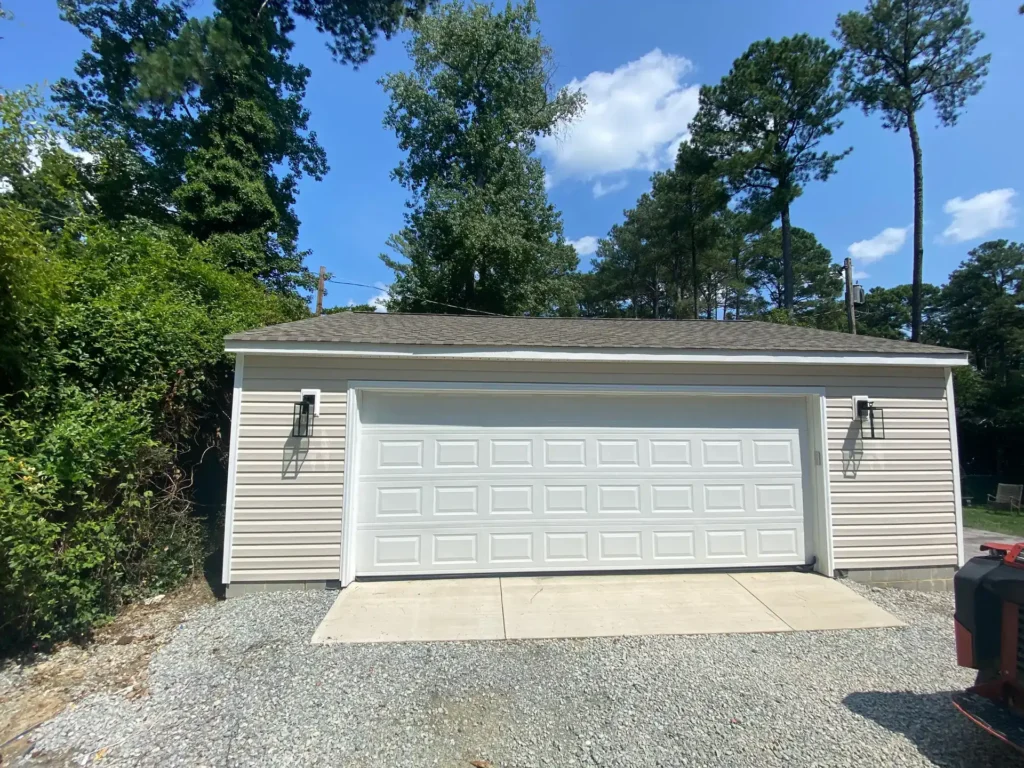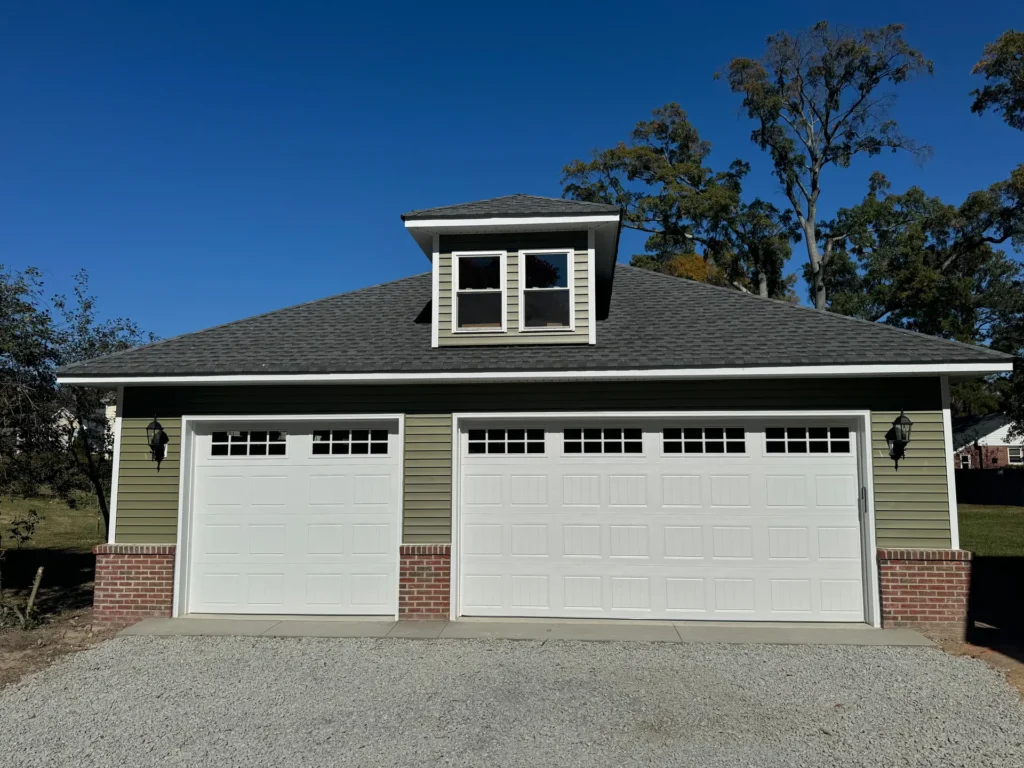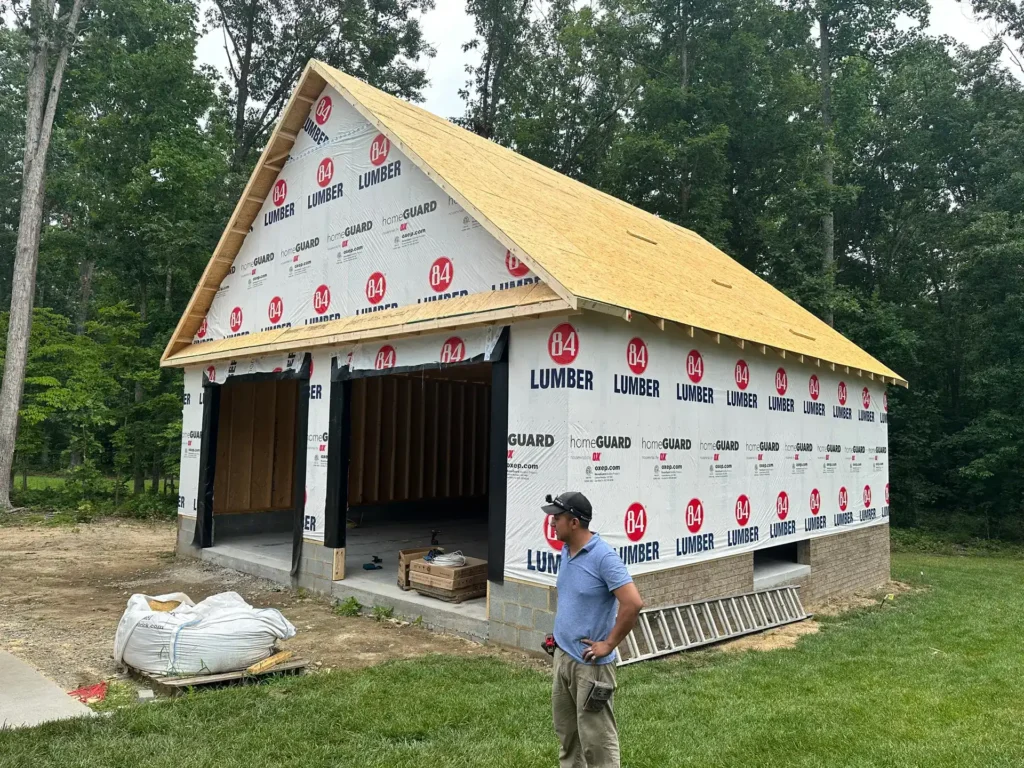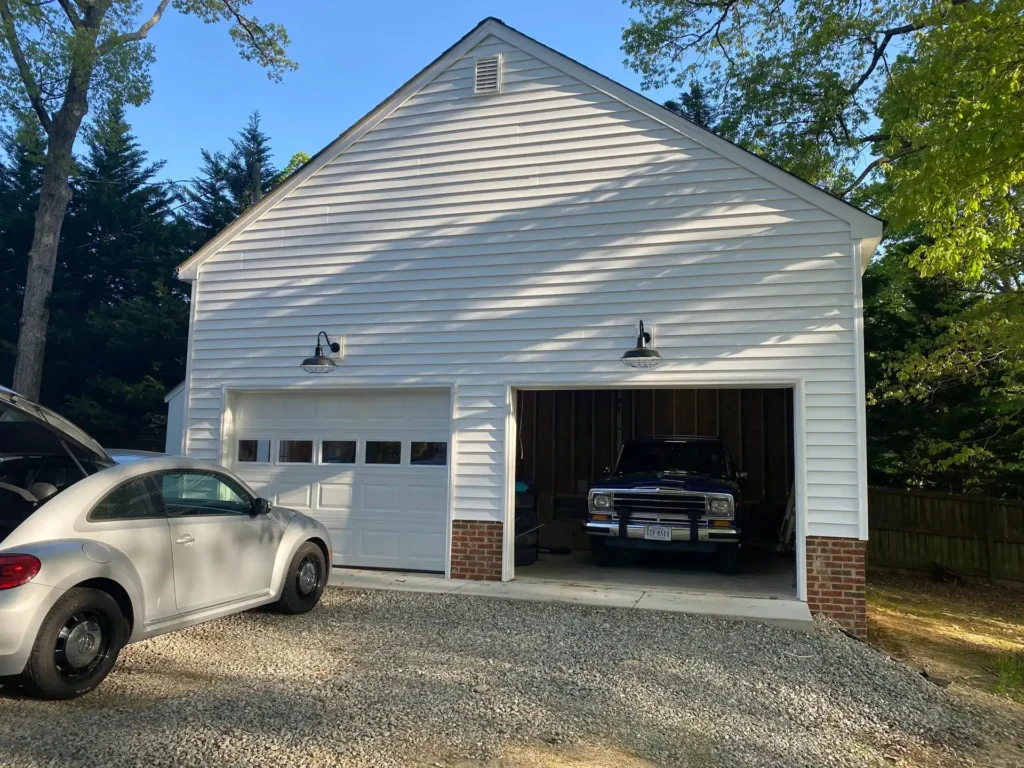
Think about how often you use your garage door. For many Richmond families, it’s the main entrance to the home that opens and closes several times a day. Yet, we usually only pay attention to it when something goes wrong. Imagine rushing to work in the morning, only to find your door stuck halfway, or worse, not moving at all. You can avoid that frustration with a bit of regular maintenance. In this guide, I’ll show you how to properly maintain your garage door so it stays in great condition and avoids those inconvenient issues.
Why Garage Door Maintenance Matters?
Your garage door is more than just a door. It’s a moving system made up of springs, rollers, tracks, and sensors that all work together. Each part has a job, and if one fails, the entire system struggles. Proper maintenance keeps everything running smoothly, keeps your family safe, and helps you avoid costly emergency repairs.
Common Problems if You Skip Maintenance
Skipping garage door maintenance might seem like a time-saver, but it often leads to bigger problems down the line. Some of the most common issues that arise include:
Loud or Grinding Noises
Dirt and lack of lubrication can cause rollers and tracks to wear out faster, making your door noisy and difficult to operate.
Slow Door Response
If the door is slow to open or close, it could be a sign of a misaligned track or a worn-out spring.
Failure to Open or Close
A door that gets stuck halfway or won’t close all the way could be due to faulty sensors or a door out of balance.
Broken Springs or Cables
One of the most dangerous issues, broken springs can cause the door to fall suddenly, posing a serious safety hazard.
Wear on Weatherstripping
Poor weatherstripping reduces energy efficiency, leading to higher energy bills, especially during extreme weather.

Routine Garage Door Maintenance Checklist
Observe Door Operation
The first thing to check is how your garage door operates. When you open or close it, does it make grinding, squeaking, or banging noises? Does it move smoothly or seem to hesitate or jerk? If so, these could be signs of underlying issues with alignment or the door’s movement system. Make sure the door opens and closes fully without hesitation. Watch for any signs that the door isn’t properly aligned on the tracks or that it’s struggling to lift evenly.
Inspect and Tighten Hardware
Every time the door moves, vibrations loosen bolts and hinges. Over months, those small shifts add up. Grab a wrench and tighten any visible nuts or screws. It’s a quick task that prevents the door from wobbling and reduces strain on the opener.
Check Cables, Springs, and Seals for Wear
Cables and springs carry most of the door’s heavy weight. If you notice rust, fraying, or gaps in the springs, call a professional right away. These parts are under high tension and can be dangerous to fix yourself. Don’t forget the seals at the bottom of the door—they block water, dirt, and pests. Replace them if they’re cracked or brittle.
Inspect and Replace Rollers if Needed
Rollers are what let the door glide up and down the tracks. If they’re chipped, cracked, or worn down, the door becomes noisy and uneven. Replacing rollers every few years keeps the door moving like new and saves stress on the opener motor.
Clear and Clean Tracks for Smooth Movement
Tracks often collect dust, dirt, or even cobwebs. Wipe them clean and check that they’re straight. Misaligned tracks force the door off balance, which can lead to bigger mechanical issues. A clean track helps everything run smoothly.
Lubricate All Moving Parts
Think of lubrication as giving your garage door a fresh drink of water. A small amount of garage-door-safe lubricant on hinges, rollers, springs, and chains keeps them from grinding. Lubrication reduces noise, prevents rust, and makes the parts last longer.
Clean and Wash the Door Surface
Your garage door faces rain, wind, dust, and sunlight every day. Washing it removes dirt and grime that can cause rust or fading. A clean door isn’t just about looks, it also helps preserve the material, whether it’s metal, wood, or composite.

Safety & Performance Tests for Garage Doors
Test Garage Door Balance
A balanced door takes stress off the opener. To test it, disconnect the opener and lift the door halfway. If it stays in place, the balance is good. If it falls quickly or shoots upward, the springs may need adjusting.
Test Auto-Reverse and Safety Sensors
Modern garage doors have safety systems to protect you. Place a block of wood under the door and try closing it. If the door doesn’t reverse when it touches the block, the sensors need fixing. Safety features are not optional, they can prevent accidents.
Check and Replace Remote Batteries & Opener Bulbs
Sometimes the simplest things cause the biggest headaches. If your remote stops working, try new batteries. If the opener light is out, replace the bulb. These small fixes are easy and keep the system reliable.
Adjust Opening and Closing Speed if Necessary
If your door slams shut or creeps open at a snail’s pace, adjusting the opener speed can make a big difference. Many openers have dials or settings for this. A smooth, steady speed protects the motor and makes everyday use easier.

How to Protect Your Garage Door from Richmond's Weather and Last for Years
Inspect and Replace Weatherstripping
Weatherstripping is that rubber seal running along the edges of your garage door, designed to keep out the cold, rain, and pests. If it’s cracked or worn out, you’ll likely notice drafts, wet floors, or even small critters sneaking inside. Replacing damaged weatherstripping helps prevent these issues, keeping your garage dry, clean, and more energy-efficient. It’s a small fix that can make a big difference, especially during those colder months when energy bills start to rise.
Clean the Area Around the Door
We all know how clutter can sneak up around the house, but did you know it can affect your garage door’s performance? Things like leaves, tools, or even kids’ toys can get in the way of the door’s sensors or get caught in the tracks, causing unnecessary strain. By simply keeping the area around the door tidy, you’re preventing potential damage and making sure everything runs smoothly.
Reduce Friction Between Door and Stop
Is your garage door making a squeaky noise or getting stuck when it moves? This could be a sign that the door is rubbing against the frame, causing resistance. A little lubricant at these friction points can do wonders, helping the door move more smoothly and quietly. It’s a simple fix that keeps everything running without a hitch and reduces wear over time.
Protect From Damage and Rust
Whether you have a metal or wooden garage door, exposure to moisture can lead to serious problems. Metal doors are prone to rust, while wooden doors can warp or crack. To protect against these issues, consider applying a fresh coat of paint or sealant every couple of years. This simple maintenance task acts like a protective layer, keeping your garage door strong, durable, and looking good for years to come.
Maintain Proper Ventilation
A hot, humid garage can do a lot more damage than you think. It can wear down your door’s components and cause the opener to struggle. Proper ventilation and insulation are key to creating a healthier environment for your garage door—and everything you store inside. By maintaining a comfortable temperature in your garage, you’ll not only help extend the lifespan of your door but also keep your garage more pleasant to spend time in.
How Often Should You Maintain Your Garage Door?
Monthly checks, like watching the door’s movement, tightening hardware, and cleaning the tracks, help catch problems early. Bigger jobs, like replacing weather-stripping or painting, are best done once or twice a year. Think of it like a regular health check-up, small steps that prevent bigger troubles.
Benefits of Routine Garage Door Maintenance
Routine maintenance extends the lifespan of your garage door. It saves you money by preventing costly repairs and keeps your family safe by ensuring all safety features work properly. And let’s not forget curb appeal: a clean, smooth-working garage door makes your whole home look better.
DIY vs Professional Garage Door Maintenance
There’s plenty you can do yourself: cleaning, lubricating, and tightening bolts are all safe and simple. But tasks involving springs, cables, or opener repairs can be dangerous. Professionals have the right tools and training to handle them safely. In this case, it’s best to call a professional garage door expert to keep both you and your door safe.
Why Choose LHC Services for Garage Door Maintenance in Richmond?
At LHC Services, we treat your garage door like it’s our own. Our experienced technicians check every detail, from safety sensors to springs. We catch problems early and fix them before they turn into expensive repairs. Our service plans are affordable, and our inspections give you peace of mind. With us, your garage door stays reliable year-round.
Conclusion
Your garage door works silently every day, but it still needs some care. With regular maintenance, it will continue to work safely and smoothly for years. Don’t wait until something goes wrong to realize how important it is. Take action today, schedule your next garage door maintenance with LHC Services and keep your door in top shape.
